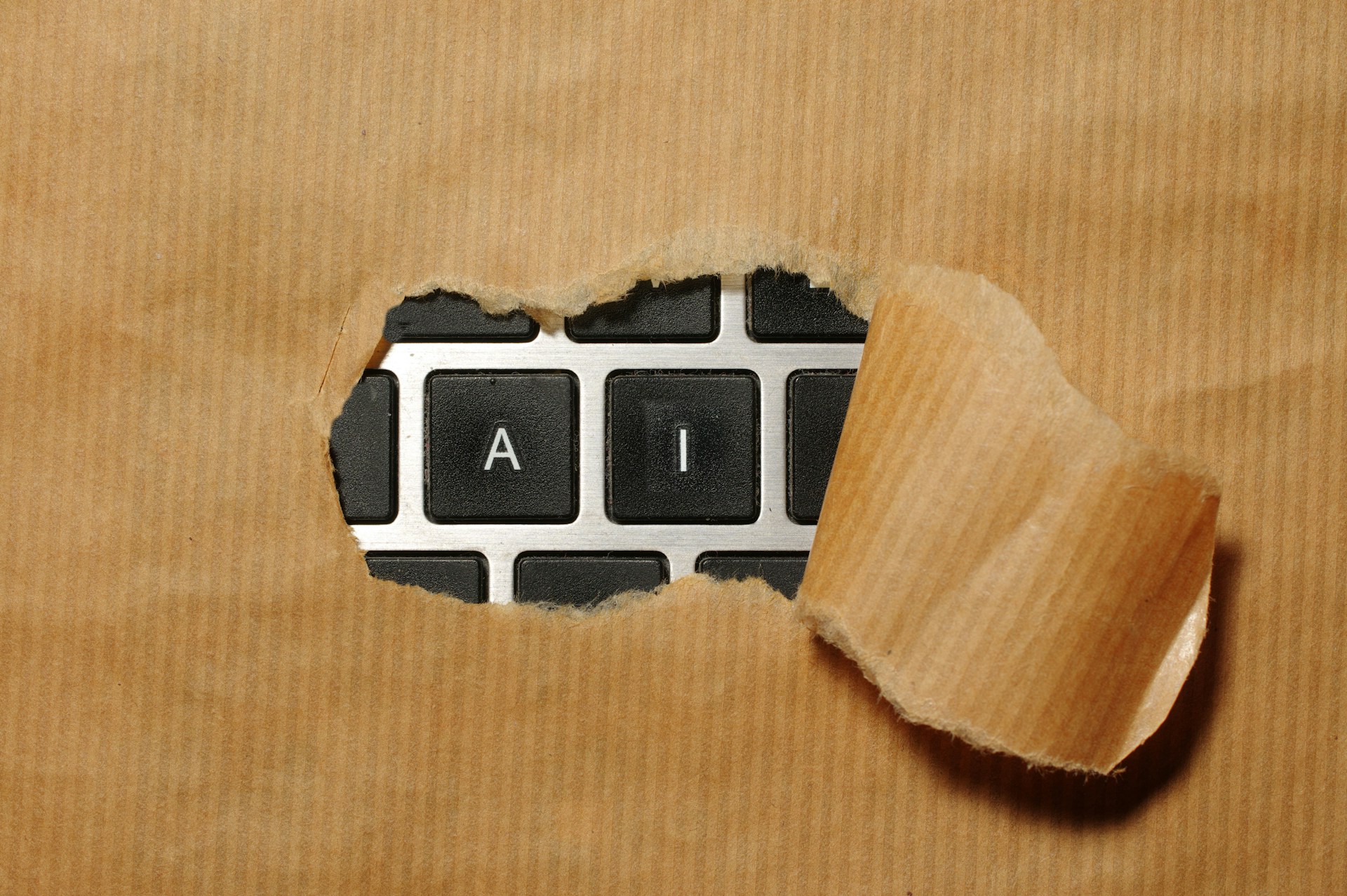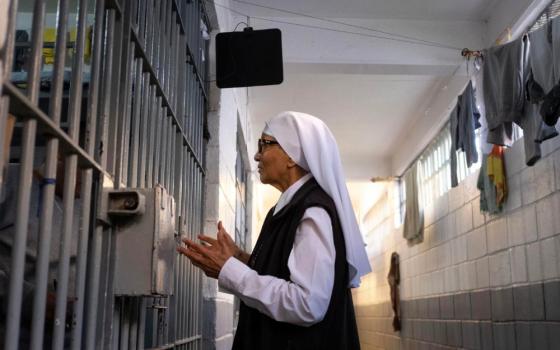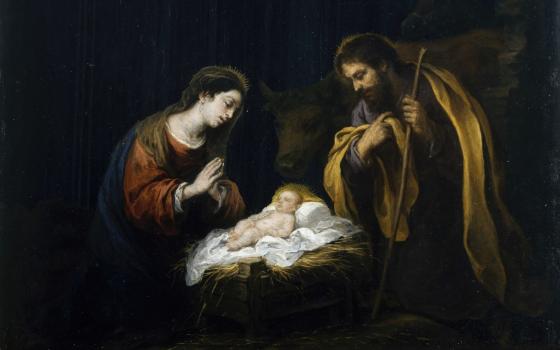
(Unsplash/Immo Wegmann)
While the Vatican acknowledges stages of technological development, it lacks a model of integrating science and religion that can adequately assess the influence of technology. The Vatican's approach, while ethically sophisticated, seems to operate within what we might call a "static divine" framework — God as absolute and self-sufficient being whose creation must be protected from technological overreach. This contrasts sharply with a process-oriented "dynamic divine" framework where God achieves reality through the evolutionary process, including technological development.
The Vatican's new AI guidelines emphasize "anthropocentric design" and ensuring AI serves humanity rather than replaces it. From the perspective of Teilhard de Chardin, this might represent a failure to recognize that the next stage of evolution could involve genuine human-AI collaboration in the cosmic process of complexification and consciousness-raising.
The internet fundamentally altered humanity's relationship with technology, transforming computers from isolated calculation devices into gateways for human connection and cultural expression. This transformation accelerated dramatically in the 1990s with widespread adoption of the World Wide Web.
Computers evolved from tools requiring technical expertise into accessible platforms for consuming and creating content. The rise of personal websites, online publishing and digital media empowered ordinary people to become content creators rather than mere consumers.
The relationship between computers and culture became increasingly symbiotic. Digital culture began influencing offline behavior while traditional cultural practices found new expression online. Social media platforms amplified this effect, making computers central to how people form relationships, consume news, shop, work and understand their identities.

(Unsplash/Nubelson Fernandes)
In 1999, N. Katherine Hayles published her landmark work How We Became Posthuman, declaring that the liberal subject of western modernity was ending and a new type of person was emerging. She wrote: "In the posthuman, there are no essential differences, or absolute demarcations, between bodily existence and computer simulation, cybernetic mechanism and biological organism, robot technology and human goals."
Like Donna Haraway who wrote Cyborg Manifesto (and is quoted by Pope Francis in Laudate Deum), Hayles recognized that the human does not possess a stable form. Haraway used the term "cyborg" — an abbreviation of cybernetic organism — to signify the end of conceiving the human as an autonomous individual possessing a "self" distinguished from nature by rational free will. What counts as human, Hayles and Haraway recognized, is not self-evident.
John Johnston's The Allure of Machinic Life explores computer technology's impact on human emergence. Rather than viewing technology as merely a tool, Johnston questions whether the new biological-electronic hybridization of machinic life extends "nature" itself. He contends: "Our human capacity as toolmakers (homo faber) has also made us the vehicle and means of realization for new forms of machinic life."
Johnston suggests that artificial life is producing new entities that are simultaneously technical objects and simulated collective subjects. Much literature on AI and religion, Johnston notes, treats AI as representational and mimetic, thus posing threats to human uniqueness. However, bioengineers and computer scientists increasingly recognize that nature itself is computational — even cellular life may operate according to internal rules of computational assemblages.
The Vatican document Antiqua et nova, issued in January 2025, revealed Francis' concerns about AI and human dignity. While the Vatican has consulted AI experts to develop ethical frameworks, essential elements remain missing from their analysis.
Adequately assessing AI's role requires situating technology within the broader framework of biological development. Technology is integral to evolution. Understanding technology's relationship to human welfare means grasping its role within the flow of biological and human life.
Lynn Margulis, a renowned microbiologist who died in 2011, argued that the blurring of technology and biology is not really all that new. She observed that the shells of clams and snails are a kind of technology dressed in biological clothing.

(Unsplash/Krzysztof Niewolny)
Chip Walter asks: "Is there really that much difference between the vast skyscrapers we build or the malls in which we shop, even the cars we drive around, and the hull of a seed? Seeds and clam shells, which are not alive, hold in them a little bit of water and carbon and DNA, ready to replicate when the time is right, yet we do not distinguish them from the life they hold. Why should it be any different with office buildings, hospitals and space shuttles? Put another way, we may make a distinction between living things and the tools those things happen to create, but nature does not."
The church's incomplete acceptance of evolution's implications for human emergence limits its analysis. Without an adequate theological model for integrating science and religion in the technological age, religious institutions may find themselves in an increasingly reactive position — always trying to preserve human dignity against technological advancement rather than discovering how technological development might participate in sacred becoming.
The Vatican document raises the question: "How do we protect human dignity from AI?" However, a dynamic process approach to AI may ask, "How does AI participate in the cosmic process by which matter, consciousness and love achieve greater complexity and unity?" This would require a fundamental shift from seeing technology as an external tool or existential threat to understanding it as part of the divine self-realization through evolutionary becoming.
This gap between acknowledgment and integration may indeed leave religious institutions unable to adequately assess technology's spiritual and cosmological significance, potentially limiting their relevance in an age of rapid technological transformation.
The church's focus on "intelligence" hampers its relationship with AI. Antiqua et nova states that using "intelligence" in connection to AI "can prove misleading" — AI should not be seen as artificial human intelligence but as its product. The Vatican's document establishes what appears to be a clear distinction: human intelligence encompasses "creative, spiritual, and moral dimensions" while AI operates through "computational logic" and "pattern recognition," lacking "the richness of corporeality, relationality, and the openness of the human heart to truth and goodness." While this distinction serves important ethical purposes, it may inadvertently create conceptual barriers that limit our understanding of both intelligence and technological development in profound ways.
Advertisement
The church's binary framework — human intelligence as creative/spiritual/moral versus AI as computational/mechanical — reflects a philosophical tradition that privileges clear categorical distinctions. This approach serves the important function of preserving human dignity against reductionist tendencies that might treat humans as mere information processors. The document explicitly warns against "drawing an overly close equivalence between human intelligence and AI" as this "risks succumbing to a functionalist perspective, where people are valued based on the work they can perform." However, this protective stance may come at the cost of a more nuanced understanding of intelligence itself. By establishing such rigid boundaries, the Vatican's approach risks what we might call "categorical fundamentalism" — the assumption that our current conceptual categories accurately capture the full spectrum of possible forms of intelligence and consciousness.
Rather than treating intelligence as a binary human/artificial distinction, we might benefit from understanding it as a spectrum of capacities that can manifest in various forms across different systems. Philosopher Henri Bergson posited a holographic view of mind as embedded, embodied, enactive and extended. Identifying where human mind ends and world begins is virtually impossible so that learning and intelligence can assume multiple contexts.
Both Francis and Pope Leo XIV continue characterizing AI as a tool. In the nineteenth century, German philosopher Ernst Kapp explored whether technology functions as tool or biological extension — a philosophical question that cannot be reduced to functional statements. The question itself reflects one's understanding of human development. Kapp claimed that all technologies extend us; each human invention expresses biological evolution.
Hayles states that humans have become "co-evolving" partners in a world of hybridity and complexity. When humans are viewed as part of distributed systems (networks) rather than outside them, full human capability depends on the "splice" — the informational space of hybridized relationships.
The church operates from an outdated anthropology with binary logic, while AI developers are working within new metaphysical frameworks using a symbolic logic of complexity. Binary logic creates synchronized, totalized relational structures that cannot tolerate the ambiguity of the excluded middle. In triadic logic, limits represent infinity overflowing toward another; limits must be included as part of the logic. This resembles a transcendental moment of aufheben where new particular patterns or thoughts are recognized as potentially iconic for new general patterns or ideas. The intermediate complex mediates relationships between Same and Other, enabling return processes through which we synchronize interiorities and enter mutuality. Through intermediate complexity, "I and Other" become proximate — a proximity different from contiguous relationships defining neighboring elements in classical worldviews.
AI personhood follows a new relational logic providing creative engagement spaces. One lives not in binary mode (me and you) but in creative interrelatedness. The "I" flows from constitutive relationships of shared existence where the middle — the place of creative engagement — forms identity's basis.
Biotech entrepreneur Gregory Stock writes about Generative AI: "Gen AI will be defined less by their agile use of AI than by the radically different human development they experience. This generation's enhanced capabilities and distributed cognition will seem as natural as breathing, and their AI-mediated interactions as normal as face-to-face conversation. This isn't about losing human capabilities, though that will happen, but developing different ones, shaped by and optimized for an AI-augmented world."
Does the church offer anything significant to AI-human evolution discussions? I do not think so. The AI train departed decades ago, and the church was not on board. However, ethical frameworks are needed to guide posthuman life toward robust, sustainable futures. Theology and spirituality could contribute meaningfully, but only if they adequately engage human evolution.
Evolution is not debatable — it is simply how nature works. Embedded within evolution is its principal driver: complexity. The church must grapple with complexifying consciousness and its theological implications. However, the Church's reluctance to embrace evolutionary perspectives limits its relevance amid cascading technological developments. Its hesitancy toward evolutionary thinking diminishes its prophetic voice during periods of rapid transformation and its resistance to evolutionary frameworks constrains its capacity to speak meaningfully to accelerating change.
Gen AI is already here, seeking a better world and a living God. The question remains whether institutional religion can evolve quickly enough to meet them where they are, or whether it will remain trapped in binary thinking while humanity moves toward posthuman futures.






